A special space
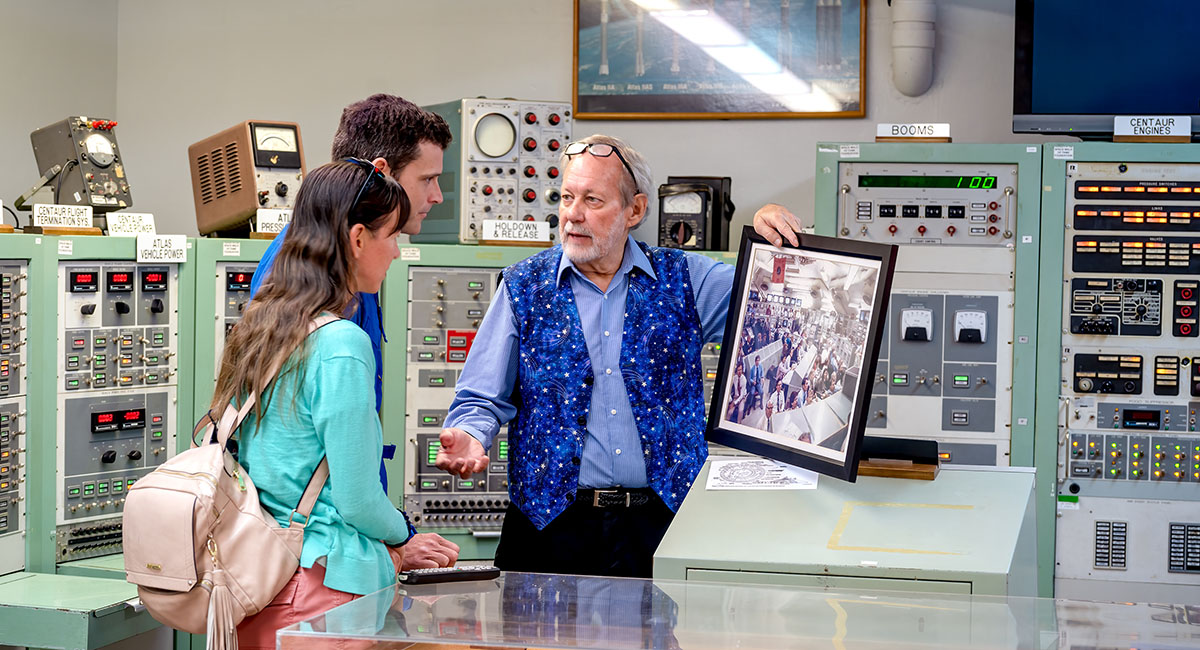
Community liaison and Stay Curious webcast host Mark Marquette is always happy to share his extensive knowledge of the space program with visitors to the American Space Museum, which houses a massive collection of space artifacts, including launch consoles. JENNIFER PRITCHETT PHOTOS
Museum relics show down-to-earth history of launches
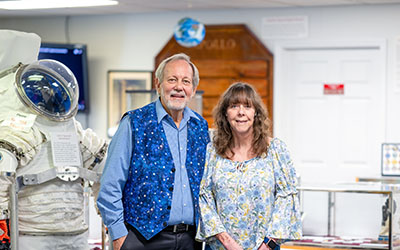
Karan Conklin, right, executive director of American Space Museum, and Marquette, community liaison, are part of a small staff that keeps the museum operating.
A unique local museum of space heritage owes its birth to, oddly enough, the Hollywood Walk of Fame.
“In 1988, Titusville physician Dr. Doyle Chastain had seen the Walk of Fame in California and wanted to do something similar to honor the workers of the space program,” said Karan Conklin, executive director of the American Space Museum and the U.S. Space Walk of Fame.
In 2001, the U.S. Space Walk of Fame Museum — later renamed the American Space Museum — became reality. Space View Park, where monuments, plaques and handprints pay tribute to the programs and people who directed America into the wild blue yonder, was dedicated in 1994.
Housed in a former commercial building in Titusville, the museum is anything but flashy from the outside. But its collection of space memorabilia and artifacts is of Smithsonian proportions. What is most endearing about the museum is that it exists due to the generosity of people associated with the space program: Nearly everything in its displays was donated by them. The engineers and the scientists who were there when the rockets were heading into the firmament saved equipment and gadgetry that might otherwise have been scrapped into oblivion.
“The space workers or their spouses started bringing their hard hats, their mission books and anything you can think of, related to space,” Conklin said. “Every week we still get more.”
The museum’s collection has outgrown its 6,000-square-foot building. The surplus is currently stored at a facility kindly donated by Parrish Medical Center — until the dream of a larger building is realized.
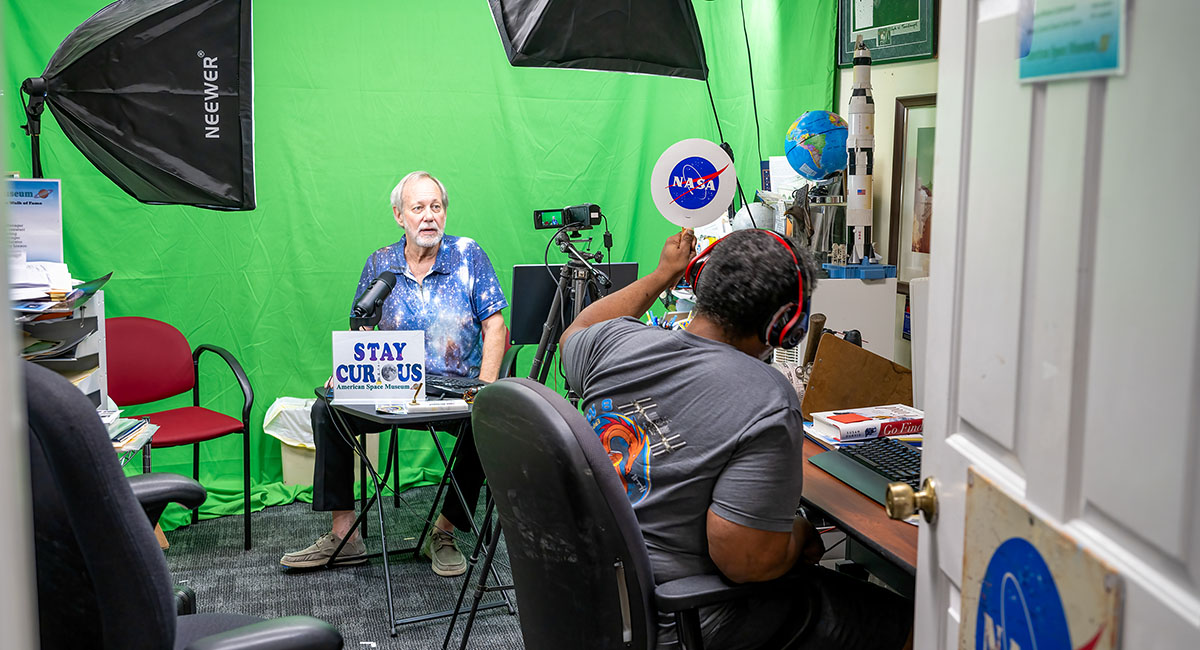
Marquette launched his Stay Curious webcast to keep interest in the American Space Museum alive during the pandemic. More than 1,000 episodes later, the show draws fans from around the world. Marty Winkel, who worked on Lunar Module and Space Shuttle programs, co-produces the webcast.
LIVING HISTORY
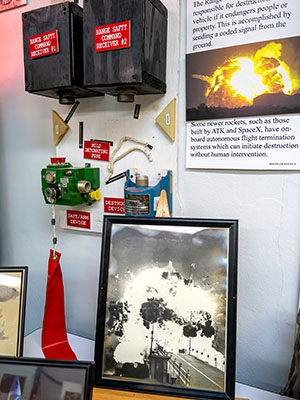
The museum’s collection of artifacts, memorabilia and vintage images is extensive and encompasses the entire space program.
Conklin is quick to note that the Kennedy Space Center and the American Space Museum are two very different entities. “We are more intimate, and we tell the behind-the-scenes story,” she said.
The artifacts, which range far and wide in variety, include items such as an advanced crew space suit from the Space Shuttle, Russian space program gloves, a NASA crawler transporter, the shuttle seat from Norm Thagard’s return from Mir space station, a banana pellet designed to be fed to monkey astronauts, a prototype lighted space glove, a Mercury spacecraft hatch from the MA-1 mission, an emergency egress manual from Apollo 1, and launch consoles — a lot of them.
“Nobody has as many consoles as we do,” Conklin said.
One is used as a living-history piece, where guests are invited to sit on the plastic chair and throw switches that simulate launching rockets into space. An actual launch sequencer from Launch Complex 16, removed after the Cold War cooled off, also found its new home at the museum. So did the Atlas Centaur consoles from Launch Pad 36A.
The collection is divided into galleries that pay tribute to Mercury, Gemini, Apollo and the Space Shuttle, while the Women of Space Gallery is dedicated to the women who have orbited the earth. The museum hosts monthly astronomy programs, an annual ShuttleFest, and special educational programming for schools and groups.
Conklin started as a volunteer decades ago, working her way to her current job seven years ago. Operating on a lean budget, the museum employs only a handful of staff members and depends on volunteers, many of them veterans of the space program. “If we didn’t have volunteers, we wouldn’t be able to keep our doors open,” Conklin said.
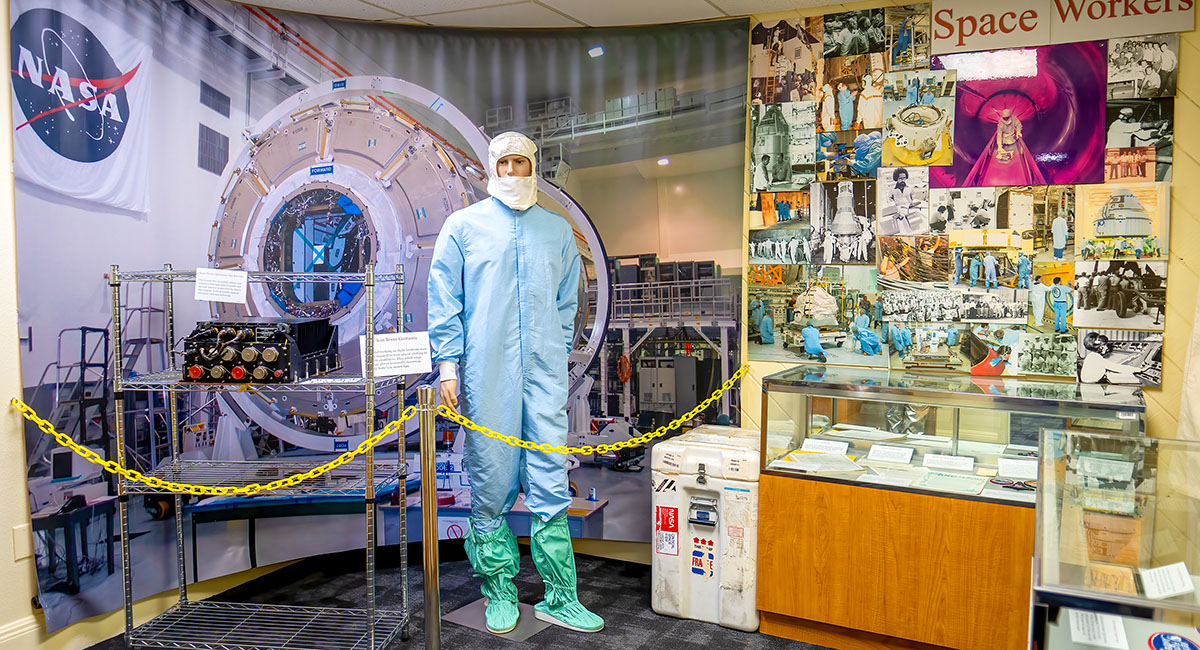
The American Space Museum is a place where the workers in the space industry are recognized and honored.
PERSONAL TOUCH
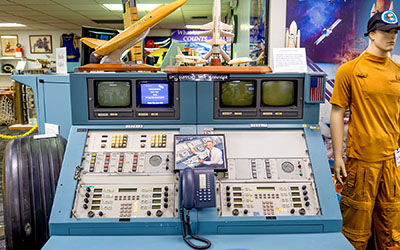
Among the items are a definitive collection of launch consoles, including a launch sequencer from Launch Complex 16 and the Atlas Centaur consoles from Launch Pad 36A.
Marty Winkel, who worked on electronic technology for the Lunar Module and the Space Shuttle, volunteers a large portion of the week at the museum — primarily as co-producer of Stay Curious, the webcast that fellow space fan Mark Marquette hosts five days a week. Marquette’s laidback show weaves interviews with astronauts and space workers with stories of artifacts from the collection. His guests have ranged from the late Hugh Harris, the “voice of NASA,” to astronaut Gus Grissom’s brother. Marquette loves to share astronauts’ birthdays, what’s going on in the night sky and the latest launch details from Kennedy Space Center.
“Mark puts a lot of work into this and does an excellent job,” Winkel said. “I learn a lot from him. Every day, I learn or remember something I had completely forgotten.”
When he retired from his job in Johnson City, Tennessee, Marquette went on a field trip to the 34 space museums then listed in Wikipedia. When he visited the American Space Museum, he knew he was home.
“I just fell in love with it,” he said.
As the museum’s community liaison, Marquette created Stay Curious as a way to capture imaginations during the shutdown caused by the pandemic. “We had to make sure to keep our visibility out there,” he said. He has done a stellar job. After more than 1,000 episodes, Stay Curious has earned a devoted band of viewers from around the globe. The show is never slick, and that is a considerable part of the charm. “We’re not professional, but that doesn’t bother us,” Marquette said. “We have built a lot of friends along the way.”
Just blocks away from the museum is Space View Park, which happens to be a perfect place to view launches as well as the home of the walk of fame. The park features mission plaques and bronze handprints of six of the original seven Mercury astronauts. The Mercury, Gemini, Apollo and Shuttle monuments are dedicated to the workers and astronauts of these programs and contain their names. The In the Line of Duty memorial is dedicated to the workers and astronauts who lost their lives during the space program. An International Space Station pylon is in the planning stage.
In 1996, astronaut Alan Shepard noted that “we need to remember the people who made it possible, so little is said of them.” The American Space Museum is here to tell that story.
“You can see the ‘get down to the nitty gritty’ part of what it took to send those birds and their guests up to go work,” wrote visitor Deb McWaters. “It is a museum that is not chrome and glass but shows the elbow grease behind a program that took the elbow grease of over 40,000 workers, in order for us to be celebrating now. Bless these people for celebrating those who were not in the glory positions but should have shared the limelight with the well-deserving cowboys who rode those boosters, as many attacked the work just as fervently and with the same amount of pride. Every job was crucial; any miss could be fatal. You can feel that in the museum, and it’s humbling and exhilarating.”
Stay Curious
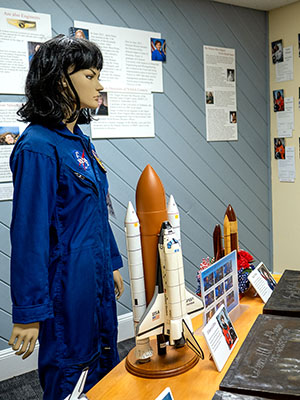
One of the museum galleries is devoted to women’s contributions to the space program.
The American Space Museum’s Stay Curious webcast is broadcast live on YouTube at 4 p.m. ET weekdays.
Previous episodes are also available on YouTube.
AMERICAN SPACE MUSEUM
308 Pine St., Titusville
321.264.0434
Admission: $10 for adults; $8 for seniors 65 and older and for military, active or retired; and $5 for youths 13 to 18. Children 12 and younger are admitted free.
Hours: 10 a.m. to 5 p.m., Mondays through Saturdays
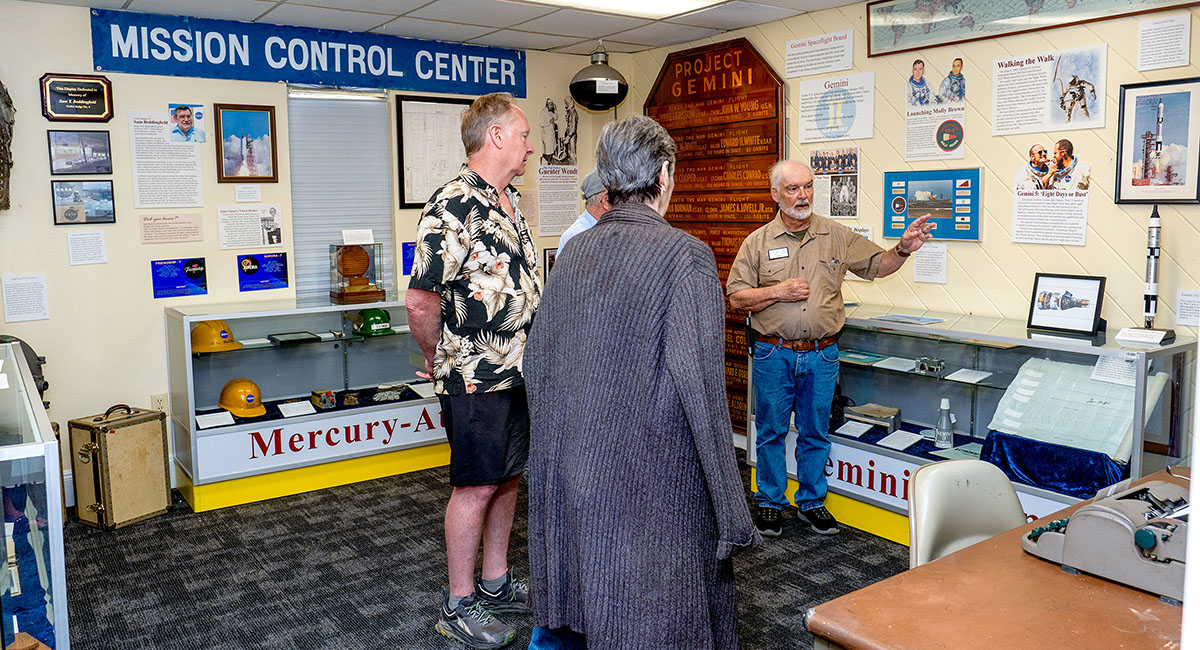
Volunteer docent Gary Allgire leads visitors through a gallery that pays tribute to the Mercury program.

Maria Sonnenberg
Maria is a prolific writer and proofer for Space Coast Living and an adjunct professor at Florida Institute of Technology’s Nathan M. Bisk College of Business. When not writing, teaching or traveling, she can be found waging a one-woman war against her lawn and futilely attempting to maintain order among the chaos of a pack of extremely clueless wirehair dachshunds and an angst-driven basset hound.



